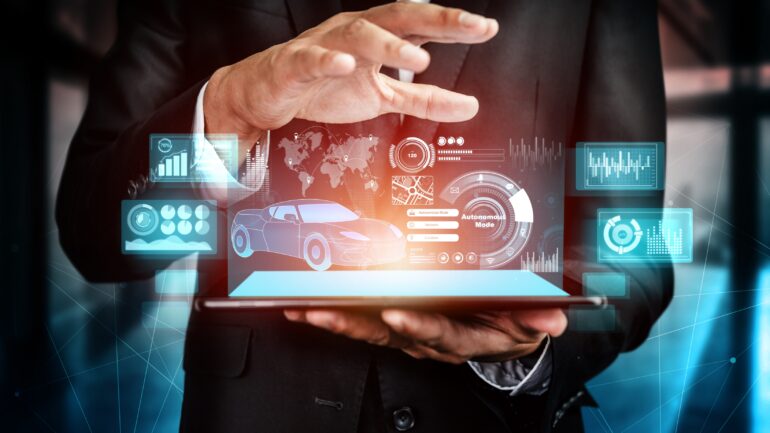Cyborg Finance Unleashed

The market’s new brain, while certainly efficient, also brings with it difficult and often, systemic risks. An arms race for speed and AI supremacy would only exacerbate the inequality.
For years, financial markets had been marked by human calls, ticker tape clatter and the slow drip of official economic reports. Human analysis and interaction provided the background in which decisions were made, better or worse. But now, when you look into the guts of the market today, you will find something starkly different – a super-connected, digitized entity with millisecond algorithms and an altered attitude to economic intelligence.
When India’s market regulator SEBI sent ripples through global finance by banning Jane Street — one of Wall Street’s elite algorithmic trading firms — it marked more than just a rare regulatory crackdown. This landmark moment thrust into the spotlight the rapidly-accelerating convergence of ultra-fast algorithmic trading and AI-powered nowcasting, where machines not only execute trades in milliseconds but also interpret economic data in real time. Together, these technologies are reshaping global markets with dazzling efficiency — and posing uncomfortable questions about fairness, access, and systemic risk.
HFT meets Nowcasting
In traditional algorithmic trading – overwhelmingly popular today – orders and decisions are made according to the pre-programmed instructions utilizing brute computational power. Although absolute figures are hard to come by, estimates reveal automation performs the overwhelming proportion of transactions among major asset classes today. Among these, High-Frequency Trading (HFT) algorithms, using nanosecond timescales to play minute price shifts, bears an outsized share of volume. They do not seek the way humans seek to scale profit – per trade, rather, their target is micro profits multiplied by millions.
The programs today are light years beyond simple rule-following systems based on static technical indicators. Currently, Deep Learning and Reinforced Learning (Machine Learning, ML) enable learning, adaptation, and optimization of strategies in algorithms with huge datasets and simulation of market situations. Imagine systems that continuously optimize parameters, find hidden trends that humans cannot recognise and even come up with new trading strategies by themselves. Generative AI generators have yet another dimension, in that they can pour over unstructured data such as news headlines, social media sentiment and analyst reports at scale, and discover market moving narratives quicker than a human team.
Concurrently, another revolution transforming the state of economic thinking: nowcasting. This involves seeking early estimates of gross domestic product (GDP), inflation, employment and other important economic indicators either in real-time or near-real-time, instead of static point-in-time forecasts. Official statistics for a given time period are often released weeks or months after – nowcasting helps to plug this gap providing a real-time feel of the economy.
The nowcasting engine room takes complex statistical models such as dynamic factor models and integrates state-of-the-art AI and ML methods. These systems are consuming a deluge of varied data: classic indicators, but more and more kinds of alternative flows. Think of computer analysis of satellite photographs of factory car parks, of credit card transaction streams, and of the flow of freight, of job advertisements or even of information on mobile sites to evaluate retail traffic. Trained AI models extract worthwhile information within this very complex, noisy data, and produce a sort of digital twin of economic activity that is updated by the minute. Recent studies still demonstrate that ML models substantially out perform long-term ones, and more so in instances of economic uncertainties or a rapidly changing environment when real-time insight is of utmost value.
Trading algorithms are increasingly hyper-adaptive, AI-driven and are being fed by advanced, real time nowcasts based on massive, alternative datasets. This forms a faster and responsive ecosystem of the market. It has been touted as bringing benefits: more liquidity as HFT firms keep placing bids and offers, the bid-offer spread narrowing, and transaction costs of other market players.
The Risks of Cyborg Finance
However, risks intensified by this nexus are often massive and should be taken into account seriously by the regulations:
- Systemic Risk and Flash Events: The Flash Crash in 2010 was a grim reminder that high-frequency trading algorithms can get you into trouble. The fact that AI can also learn and interact within such HFT systems brings with it the danger of rather unpredictable, emergent effects in interconnected systems, leading to fast, cascading effects far beyond the ability of humans to intervene, or even comprehend at the time.
- Opaqueness and Accountability: The opacity in complex AI models means it is not always easy to identify why an algorithm made the trades it did, making them hard to investigate in case of market manipulation or destruction, particularly in cases of harm caused by a self-learning system.
- Signal Amplification: Speed enhances such manipulation tactics as spoofing (placing and cancelling orders in order to deceive) or quote stuffing (swarming the markets with orders in order to overwhelm competing interests). There is the possibility of AI coming up with more elaborate, less visible manipulative tactics.
- The Access Gap: The space between those with and without access to more technology and capabilities keeps getting wider: better connectivity, stronger AI, access to custom alternative data feeds, etc. This forms an effective barrier to entry, thus being able to consolidate influence in the hands of several tech-savvy companies and rift the difference between big institutions and small investors.
All these present a massive challenge to regulate this so-called cyborg finance. Regulators such as the U.S. SEC, CFTC and European Securities and Markets Authority (ESMA) are struggling with frameworks. Among them, they are making using algorithm-testing environments compulsory, thereby improving market monitoring while levying bigger fines on market-manipulation activities. The risks that are of particular concern to the global community, even at the levels of financial standing organizations such as the Financial Stability Board, stem around AI adoption in the financial industry, namely data quality, model validation, governance, and implications internationally. Nevertheless, regulatory capture is always set in check by the rate of change in technology.


